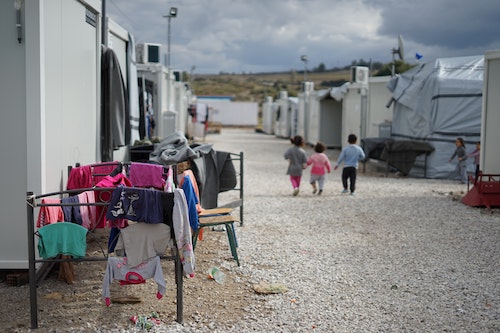Student-led Research Team
Team Leads: Laura Belik, Graduate Student, Architecture, College of Environmental Design, UC Berkeley; Heba Najada, Graduate Student, Global Metropolitan Studies, UC Berkeley
As places of exception and mass incarceration, the camp constitutes a space set apart outside the boundaries of legal and civil rights. Camps are intimately related to the era of colonization and its attendant processes of invasion, occupation, disruption, and relocation. They are nodes of state power and spatial manifestation of a society that periodically splinters into distinct categories based on belonging or non-belonging. This working group centers its focus on the space of the camp, in an interdisciplinary context, to explore how its “architectures” — the camps themselves, their spatial layout, infrastructure systems and camp-thinking — have operated to shape, detain and enable particular forms of movement. The goal of this project is to forge space for research and debate the different models of encampments and how they shift between various nation-states and periods of time. By tracing and better understanding the multiple histories and iterations of “camps,” we pay attention to the complex mobilities involved in the carceral experience, we broach dichotomies of permanence and temporality, material and immaterial and mobility and stasis. Collectively, we aim to challenge dominant narratives of ‘crisis,’ ‘victims’ and ‘bare life’ by exploring the ways in which camps are transformed, materially and immaterially, through various forms of agency — dissent, resistance, transgression, activism, or submission and dependence — by the bodies that inhabit them.
Photo by Julie Ricard on Unsplash
